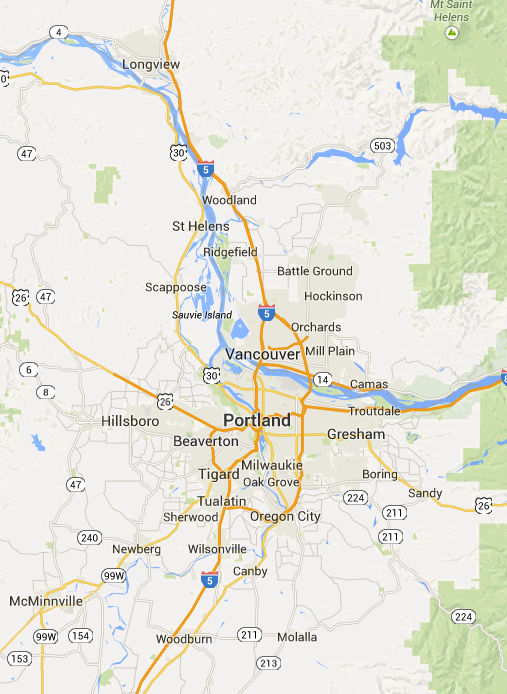How to Penetrate New Markets in the Pacific Northwest
As a marketer, you’re always looking for untapped market segments of potential consumers to buy your products or services, right?
If you’re not, your competitors will beat you to it.
Those new market segments are not easy to come by, and you know it.
Would you like to learn about potential new market segments in the Pacific Northwest and how to penetrate them?
If you do, this article is for you.
Specifically, I am going to provide you with geographic and cultural data to help you with your marketing efforts.
Similar data is already out there, provided by various government entities, but some key details are missing.
The data I will provide you with comes straight from our company.
I will give you a transparent, inside look into up-to-date cultural trends from NWI Global.
Before I dive into the details, I’d like to give credit to Certified Languages International and their annual nationwide language trends statistics. You may find these statistics useful if you’re targeting consumers on a national level.
What I am going to do is zoom in on the Pacific Northwest and provide you statistics for this area of the country.
Once you know what languages your consumers speak, you will have a better understanding of how to market to them.
Notes and Assumptions about the Data
The data used for this report comes from a sample of actual requests for in-person interpreting services from clients in a specific geographic segment.
This doesn’t necessarily mean that the persons receiving interpreting services in these languages don’t speak English. But more likely than not, they have limited English proficiency.
Additionally, the language spoken by the persons doesn’t identify which country they’re originally from. For example, Russian speakers could be from Russia or Ukraine, etc.
Finally, the in-person interpreting requests came from a variety of clients in various industries, including health care, legal, educational, governmental, business and non-profit.
Geographic Segmentation
When I pulled the data for this report, I essentially narrowed it down to the Portland, Oregon metropolitan area.
Specifically, this segment covers Multnomah, Washington and Clackamas counties in Oregon. On the Washington side of the river, it includes Clark and Cowlitz counties.
If you are not familiar with this area, here is a nice map for you to reference:
Now that you have a clear understanding of the geographic segment, let’s move on to the cultures within it.
Cultural Segmentation
Knowing the languages spoken by your consumers will help you group them according to their cultural origin.
You will then be able to create effective marketing campaigns targeted specifically to your multicultural audience.
Since language and culture are closely related, you can’t effectively market to persons in their language without understanding their culture and vice versa.
And if you are thinking that marketing only in the English language will work fine, you are missing out on a big opportunity.
You will also create a poor user experience by not providing consumers with information in their language.
Our Data
The data provided below is for in-person interpreting requests filled by NWI Global between January 1, 2014 and December 31, 2014.
| Ranking | Language | % of Requests |
|---|---|---|
| 1 | Spanish | 37.14% |
| 2 | Russian | 31.55% |
| 3 | Vietnamese | 7.96% |
| 4 | Korean | 4.09% |
| 5 | Arabic | 3.3% |
| 6 | Japanese | 2.69% |
| 7 | Mandarin | 2.35% |
| 8 | Farsi | 1.81% |
| 9 | Cambodian (Khmer) | 1.57% |
| 10 | Cantonese | 1.35% |
| 11 | Other Languages | 6.2% |
You can now compare the data in this table to other sources to get a better understanding of your multicultural audience.
Putting the Data to Use
So, how do you penetrate new markets in the Pacific Northwest?
You do that by speaking the language of your customers.
And now that you have access to the language data, you can start using it explore new market segments in the Pacific Northwest. The good news is, you can use the same marketing tools and methods you use for your English language campaigns.
Once you’re ready to market to your target audience in their language, here is why you shouldn’t cut corners doing it.
If you don’t have an in-house localization department, make sure you’re working with a language service vendor that understands your exact requirements and what you’re trying to achieve.
The benefits of communicating with your customers in their languages are immeasurable, assuming you get it right.
Additional Resources
Here are some additional resources for languages spoken in the Pacific Northwest:
- Languages in Washington State – Office of Superintendent for Public Instruction
- Languages Spoken in Seattle – Department of Planning and Development
- Languages Spoken in Oregon State – The Oregonian
Conclusion
Finding new market segments is not an easy task.
Why not branch out and focus on a specific geographical area and different cultures within it?
Now that you know the top spoken languages in the Pacific Northwest, you can better target your potential consumers.
You will also create a great user experience by providing content in their languages.
What are your experiences with identifying new market segments and communicating with consumers in different languages?


Leave a Reply
Want to join the discussion?Feel free to contribute!